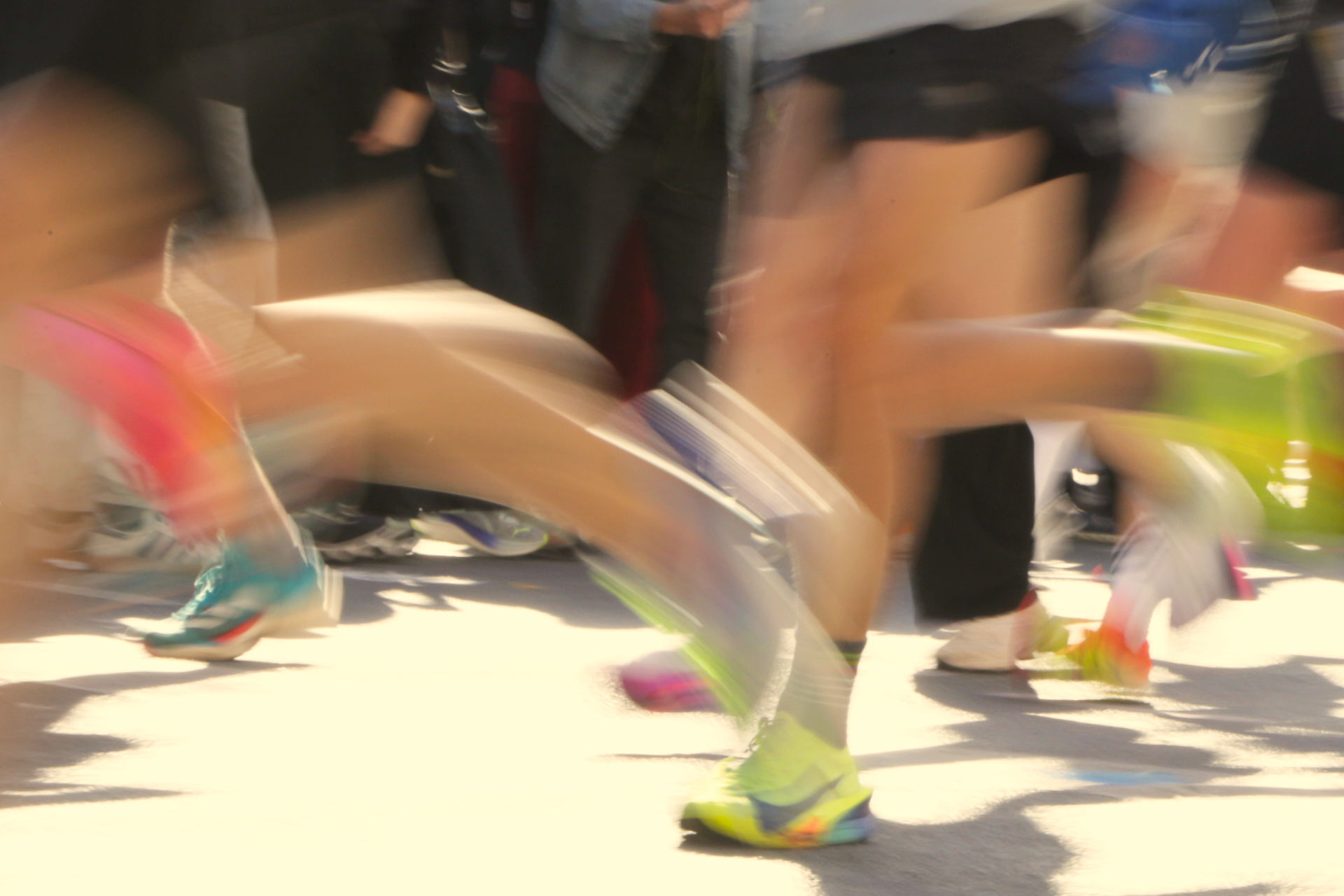Startseite / When Tendons Rebel – Understanding and Preventing Tendinopathies in Runners

Running-related Tendon Injuries Part 1
DNF at kilometer 35 – not because of your lungs, but because of your tendon. If you run regularly, you know the scenario: your legs feel ready, your mind is strong – and suddenly your Achilles tendon shuts you down.
Tendons are the unsung workhorses of running, taking on massive loads day after day. Yet, they’re among the most injury-prone structures: Between 7 and 10% of all running-related injuries affect tendons – with the Achilles tendon leading the stats, closely followed by the plantar fascia and patellar tendon (2,3).
But why are tendons so vulnerable? What training mistakes lead to trouble? And how do you protect your tendons without falling for rehab myths? Welcome to Part 1 of our deep-dive series on running-related tendon injuries – your 7-minute guide into the world of tendinopathies.
Mismatch, Not Inflammation
Contrary to popular belief, classic “inflammation” isn’t the main driver. According to the Continuum Model, tendinopathy progresses through three stages: reactive → disrepair → degenerative (1).
Put simply: the tendon initially reacts to high or sustained loads, then fails to repair adequately, and eventually degenerates if the loading stimulus isn’t adapted.
Pain ≠ Pathology
Here’s the twist: imaging tools like ultrasound often show thickening or increased blood vessel growth – but pain levels don’t always match these findings (1). That means: a “damaged-looking” tendon might still function pain-free – and vice versa.
Chronic Pain Changes the Brain
Longstanding tendinopathy alters your central nervous system. Cortical inhibition increases, muscle coordination suffers – but targeted neuroplastic training can reverse this (1). Most effective: rhythmic isometric exercises with external focus, e.g. calf presses with a metronome.
How Common Are Tendon Injuries in Runners?
Epidemiological data shows notable differences depending on performance level:
Runner group | Injuries / 1000 h | % Tendon Injuries | Source |
Novice runners | 17–18 | ≈ 10% | (2) |
Recreational <40 km/week | 7–9 | ≈ 9% | (2) |
Trail/ultra runners | ≈ 12 | ≈ 8% | (3) |
Notably: Weekly mileage over 40 km doubles the risk for Achilles tendon pain (4).
Tendons are sensitive to novel or excessive loads – especially when introduced too suddenly. A central metric here is the acute:chronic workload ratio (ACWR) – the ratio of current to average training load. If this ratio exceeds 1.3, your injury risk doubles (4).
Particularly risky: sudden training spikes, hill sprints, steep inclines, or new training formats without adequate progression.
Biomechanics matter, too:
Additional risk factors:
Use these four quick tests to check your personal risk profile:
2 or more red flags? A structured prehab plan is strongly advised.
Recovering from tendinopathy takes more than patience. It requires a structured rehab plan – and professional support. That’s where physiotherapy plays a vital role: through targeted interventions, continuous load monitoring, and personalized training adjustments, physios guide you through all four rehab phases:
Phase 0 – Pain Control
Initial goal: reduce pain without overloading the tendon.
Physio focus: isometric exercises (e.g. 5×45 s calf raises at 70% max strength).
Key marker: pain must stay ≤2/10 on the NRS scale within 24h post-load – a sign of correct stimulus.
Phase 1 – Structural Strengthening
Once acute symptoms calm down, HSR training begins (e.g. 3×6 at 3-0-3 tempo).
Progress is tracked via the VISA-A score (target ≥70) and functional markers like 20+ pain-free calf raises.
Phase 2 – Energy Storage Capacity
Goal: rebuild tendon elasticity for dynamic loading.
Start plyometrics only if tissue tolerance allows – with close supervision of technique and tolerance checks.
Phase 3 – Return to Run
Controlled re-entry with a walk-run progression (e.g. 1 min run / 1 min walk × 6).
Rule: no pain >2/10 within 24h = green light to proceed.
Neuroplastic Bonus Module
To tackle cortical inhibition, include neuroplastic training:
2×/week isometric calf presses to a 100 BPM rhythm (e.g., using a metronome).
Effect: up to 15% improvement in coordination and control (5).
Throughout rehab, physio isn’t just about exercises – it’s about smart decision-making: load calibration, 24h monitoring, and only progressing when the body is ready. The result? A safer, more sustainable, and more motivating return to running.
Coming Up Next
Part 2 of our series covers plantar fasciopathy – including a 5-minute foot care routine to ease aching soles.
Your Turn
How’s your tendon health? Are you in the clear – or surprised by your risk score?
Share your thoughts on social media and let us know what resonated – we’d love to hear from you.